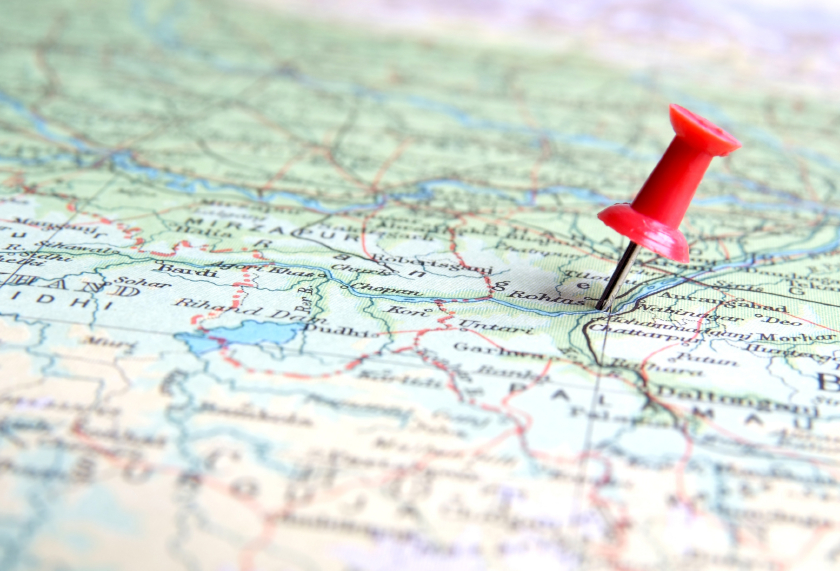For an enterprise to succeed, it must be able to connect with users. Historically, this was a rather simpler exercise as most transactions and communications happened on a personal level.
Fast-forward to today and the very communication tools that have enabled enterprises to expand and reach customers around the globe have created a greater distance between businesses and users.
As a result, there is a growing misconception that enterprises are corporate entities that refer to their users as numbers on a spreadsheet rather than individuals. This mindset is detrimental for customer loyalty, leaving businesses at risk of growing too large for their own good.
The key to balancing customer demands with the realities of business lies in using the web and social networking tools to bring the customer close in order to create an amazing user experience. New technologies to achieve this goal emerge on an ongoing basis – yet one of the simplest and most effective is often overlooked: geolocation.
A hero in disguise
Peoples’ habits and preferences have evolved along with technology – and savvy consumers demand a well-designed user interface. Equally, services have to be speedy, reliable and, perhaps most importantly, relevant. Geolocation plays a crucial part in allowing businesses to deliver against this criteria.
Geolocation technologies pick the right hosting/CDN/cloud-provider based on the end users’ location, which ensures the best possible performance, no matter where in the world the user is located. As part of the larger practice of traffic management – the control plane that allows businesses to make the most of their infrastructure – it can be a vital tool for moving content as close as possible to users.
>See also: Message in a bottleneck: Death by dated communications
Geolocation also offers unprecedented opportunities for businesses to offer their customers or users relevant, targeted content where they need it and when they need it. For example, retailers can send personalised, real-time offers to customers based on location, while at the same time enabling them to research products and compare prices on the go.
While the retail sector has started using geolocation to foster customer loyalty, most other sectors are still lagging behind – largely due to lack of awareness and expertise. However, with users demanding ever faster experiences and buying more online than ever, faster and more reliable business solutions are set to rise steeply – and may well be the deciding differentiator between businesses that succeed with users, and those that don’t.
Closing the gap
Before a web browser connects to a web server and begins downloading the web page, a DNS query (for company.com) must get a DNS response back containing the IP address of the web server. This means that DNS is in the critical path for ‘Time to First Byte’ – without DNS, not one bit of content begins downloading from the web server. Investing in technology that ensures a DNS response is sent back as fast as possible from the fastest server near a user’s location is the first step in bringing content closer to the customer.
The second part of closing the gap is using geolocation data to return differentiated DNS responses based on a customer’s location. This allows businesses to ‘slice the world up’ into custom regions and serve content that is regionally tailored. Suddenly, it is possible to return a different web page or feature different content for customers in England than for those in France, or direct customers in China to a China-specific CDN provider.
Using additional tools like load balancing – which balances the load or traffic between servers by directing page requests based on rules that are defined to better serve the business and its customers’ needs – will boost speed and availability even further. This reduces the latency customers’ experience, enabling businesses to provide better quality experiences to users.
>See also: FEATURE: Mobile collaboration in the enterprise
Ultimately, these measures also mean enterprises can be better set-up to enter new markets while having control of their brand and marketing via ensuring a top-line experience at all times.
One step ahead
By using geolocation to differentiate DNS responses, it is possible to scale infrastructure horizontally (by adding more infrastructure in more locations) and direct the customer to the best infrastructure for their current location. This is in contrast to scaling your infrastructure vertically where a company may have a single or handful of large, ever growing, datacentre and not taking advantage of their location. Scaling horizontally allows companies to build datacentres anywhere in the world where they can add capacity to their infrastructure.
Once businesses scale horizontally, geolocation enables the optimal use of this infrastructure by targeting customers with the best infrastructure for their location. The reduced distance between customer and infrastructure results in much faster performance, increased sales (studies show that for every 1 second of latency, there is a 7% reduction in sales), greater reliability, and isolation of failures – since with multiple data centres, if one goes down or experiences an interruption, it is possible to simply turn users away to another location without interrupting their experience.
Websites like Twitter, Etsy and CNBC have already begun to do this – and users are increasingly expecting these services across all online dealings. This reorientation of product and service designs around the individual end user is called being referred to today as ‘the consumerisation of IT’ – and it is not going away anytime soon. This trend shouldn’t intimidate enterprises though. Instead, they should embrace it as ultimately, moving their users to the best possible infrastructure will lead to a better user experience and therefore improve the business process.
In a fast-tracking and connected world, geolocation may well be the deciding factor enabling businesses to stay ahead of the curve. In an increasingly competitive landscape, using technologies such as geolocation to make the optimal use of their evolving infrastructure not only saves money, it increases sales.
Sourced from Chris Gonyea, Dyn







